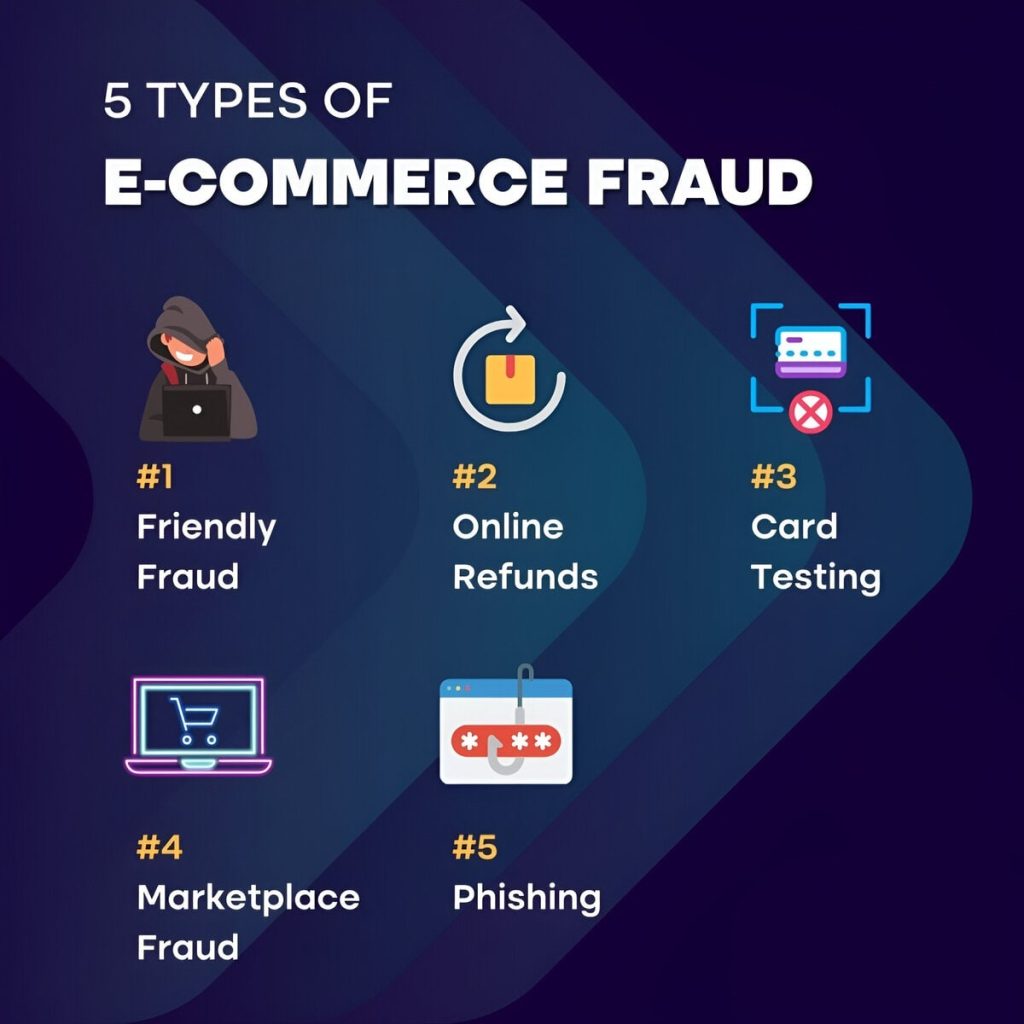Ecommerce businesses face increasing threats from fraud, costing them billions annually. As online shopping expands, fraudsters develop new methods to exploit vulnerabilities, making ecommerce fraud insurance a vital tool for risk management. This article outlines types of ecommerce fraud, the role of fraud insurance, and why it is essential for your business.
Understanding Ecommerce Fraud
Ecommerce fraud encompasses various activities aimed at defrauding online merchants and their customers. Key types include:
1. Card Testing Fraud
Fraudsters use stolen card details to make small purchases on ecommerce sites, checking card validity. Checkout.com reports a 35% increase in card testing incidents in 2023, making it a significant concern for businesses.
2. Account Takeover Fraud
Cybercriminals gain access to customer accounts using stolen credentials, leading to unauthorized transactions. Braintree.com notes that account takeover fraud accounts for 22% of all ecommerce fraud, rising 30% year-over-year.
3. Chargeback Fraud
Chargeback fraud, or “friendly fraud,” occurs when customers dispute legitimate charges, claiming unauthorized transactions. This leads to revenue loss and fees ranging from $20 to $100 per incident (Mastercard).
4. Interception Fraud
Fraudsters use stolen payment details to place orders and then intercept deliveries. Stripe.com states that interception fraud accounted for 12% of all ecommerce fraud cases in 2022.
5. Refund Fraud
Fraudsters manipulate refund processes to steal funds. Visa reports a 17% increase in refund fraud cases in 2023, reflecting its growing prevalence.
Table 1: Common Types of Ecommerce Fraud and Their Impact
| Type of Fraud | Description | Impact on Businesses | 2023 Global Statistics |
|---|---|---|---|
| Card Testing Fraud | Testing stolen card details with small transactions. | Financial losses, higher chargeback rates. | 35% increase in incidents. |
| Account Takeover Fraud | Gaining unauthorized access to customer accounts. | Loss of customer trust, direct financial losses. | 30% rise in cases. |
| Chargeback Fraud | Disputing legitimate purchases as unauthorized. | Revenue loss, additional fees, penalties. | $20-$100 per incident in fees. |
| Interception Fraud | Intercepting goods ordered with stolen payment information. | Loss of merchandise, increased shipping costs. | 12% of all fraud cases. |
| Refund Fraud | Manipulating refund processes to gain illicit funds. | Direct financial loss, potential reputation damage. | 17% year-over-year increase in cases. |

The Role of Ecommerce Fraud Insurance
Ecommerce fraud insurance provides financial protection against various fraud-related losses, helping businesses mitigate their impact. Coverage typically includes:
1. Chargeback Protection
Insurance covers financial losses from chargebacks, including fees and penalties. With chargebacks increasing by 22% in 2023 (Visa), this protection is crucial. Merchanto.org, a partner of VISA and MasterCard, offers tools for chargeback prevention, helping businesses reduce incidents. Explore more at Merchanto.org.
2. Coverage for Fraudulent Transactions
Insurance covers losses from unauthorized transactions, such as card testing and account takeover fraud. These transactions contributed significantly to the $48 billion lost globally to fraud in 2023 (Mastercard).
3. Business Email Compromise (BEC) Insurance
BEC is a rising threat, with a 15% increase in incidents in 2023 (Stripe.com). Insurance for BEC protects businesses from losses due to email-based fraud.
4. Cybersecurity Measures
Some insurance policies include access to cybersecurity tools that help detect and prevent fraud. These tools add a layer of protection, reducing the likelihood of fraud.
Table 2: Ecommerce Fraud Insurance Coverage Options
| Coverage Type | Description | Industry Data |
|---|---|---|
| Chargeback Protection | Covers financial losses and fees from chargebacks. | 22% rise in chargebacks in 2023 (Visa). |
| Fraudulent Transaction Coverage | Covers losses from unauthorized transactions, including card testing and ATO fraud. | $48 billion lost to ecommerce fraud globally (Mastercard). |
| BEC Insurance | Protects against losses from business email compromise. | 15% increase in BEC incidents (Stripe.com). |
| Cybersecurity Tools | Provides access to tools and services to prevent fraud. | Growing integration with insurance policies. |
Benefits of Ecommerce Fraud Insurance
1. Financial Protection
Ecommerce fraud insurance offers financial protection, covering losses from various types of fraud. The average loss per fraudulent transaction reached $175 in 2023 (Checkout.com).
2. Enhanced Trust
Insurance can enhance customer trust. Braintree.com found that 67% of consumers prefer sites that clearly state they have fraud protection measures in place.
3. Cost Savings
Insurance can lead to cost savings by reducing fees, legal costs, and recovery expenses. Mastercard estimates that businesses save $3 for every $1 spent on fraud prevention, including insurance.
Table 3: Benefits of Ecommerce Fraud Insurance
| Benefit | Description | Data/Statistics |
|---|---|---|
| Financial Protection | Covers direct losses from fraud incidents. | $175 average loss per fraud incident (Checkout.com). |
| Enhanced Trust | Improves customer trust and shopping confidence. | 67% of consumers prefer sites with fraud protection (Braintree.com). |
| Cost Savings | Reduces overall costs related to fraud, including chargebacks and legal fees. | $3 saved for every $1 spent on fraud prevention (Mastercard). |

How to Choose the Right Ecommerce Fraud Insurance
When selecting ecommerce fraud insurance, consider these factors:
1. Insurer Reputation
Choose an insurer with a strong reputation, especially those partnered with Visa and Mastercard. This ensures expertise in handling ecommerce fraud.
2. Coverage Limits
Understand the coverage limits of your policy. Visa reports that policies typically cover up to $100,000 per incident, but this varies by provider.
3. Integration with Cybersecurity
Look for policies that integrate with existing cybersecurity tools. Bundled services, including fraud detection software, enhance security and reduce fraud risks.
4. Cost-Benefit Analysis
Analyze the cost-benefit ratio of the policy. Stripe.com suggests aiming for a 3:1 return on investment in cost savings from insurance.
Conclusion
Ecommerce fraud insurance is essential for online businesses. It provides financial protection and supports customer trust while reducing overall costs related to fraud. Integrating insurance with cybersecurity measures and partnering with reputable providers can significantly reduce fraud risks. As ecommerce continues to grow, so does the need for comprehensive protection against evolving fraud tactics.
This article offers a detailed examination of ecommerce fraud insurance, emphasizing the importance of protection against online fraud. By following these guidelines, your business can be better prepared to face the challenges posed by ecommerce fraud.



